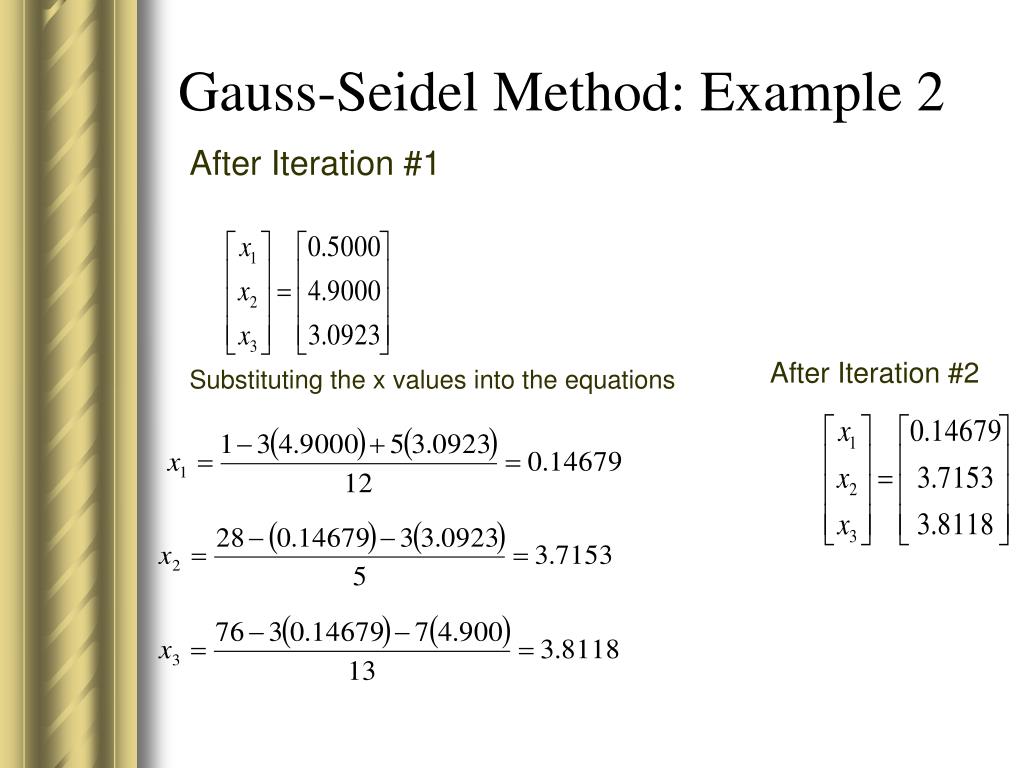

var ( 'Gs', desc = 'Government goods, supply' ) model. var ( 'Cs', desc = 'Consumption goods supply' ) model. var ( 'Cd', desc = 'Consumption goods demand by households' ) model. Next time, we will organize the equation for the two-dimensional diffusion equation and put it in a form that can be implemented.From pysolve.model import Model def create_sim_model (): model = Model () model. Gauss-Seidel method: easy to implement, good convergenceĮven today, applications of the Gauss-Seidel method are still used in the numerical analysis community. Jacobi method: easy parallelization, poor convergence The following points are often said as advantages and disadvantages. The convergence conditions have diagonal dominance too. This is the Gauss-Seidel method, which converges faster than the Jacobi method. So we use cell ((i, k + 1)) to calculate cell ((i + 1, k + 1)). However, the calculation is done in order, so when the cell (i + 1) is updated, the calculation for cell (i) has already been completed. When updating the number of iterations, the Jacobian method uses (k) to calculate and update all of (k + 1). Therefore, this iterative method can be used because it automatically becomes a diagonally dominant matrix. \(||\bf M ||<1\) (This is true when diagonally dominant.)Īlthough we don’t explain in detail, in the case of the diffusion equation, the information in cell \(i\) at the current time is effective in the information in cell \(i\) at the next time. It may be used when the element positions are fixed and the calculation can be simplified like the TDMA method, but it is rare.Ī method of performing iterative calculations to converge from an initial vector \(\bf x ^ →0\) The answer is certain, but it requires a lot of storage capacity and takes a long time to calculate. “Gaussian elimination method” (Part 2-2)and “TDMA method” (Part 3-2)are direct solutions. T is a method to obtain a solution by finite number of operations. There are three methods of solving such a matrix: “direct solution method”, “steady iteration method”, and “nonstationary iterative method”. We already know (bf A, bf b) and want to figure out (bf x). And I think it has been understood from the flow up to the previous time that the implicit method can be transformed as follows. In the first place, we are proceeding with the idea of solving with the implicit method in Part 7. In Part 7-3, I would like to explain the solution of the inverse matrix in numerical analysis.


 0 kommentar(er)
0 kommentar(er)
